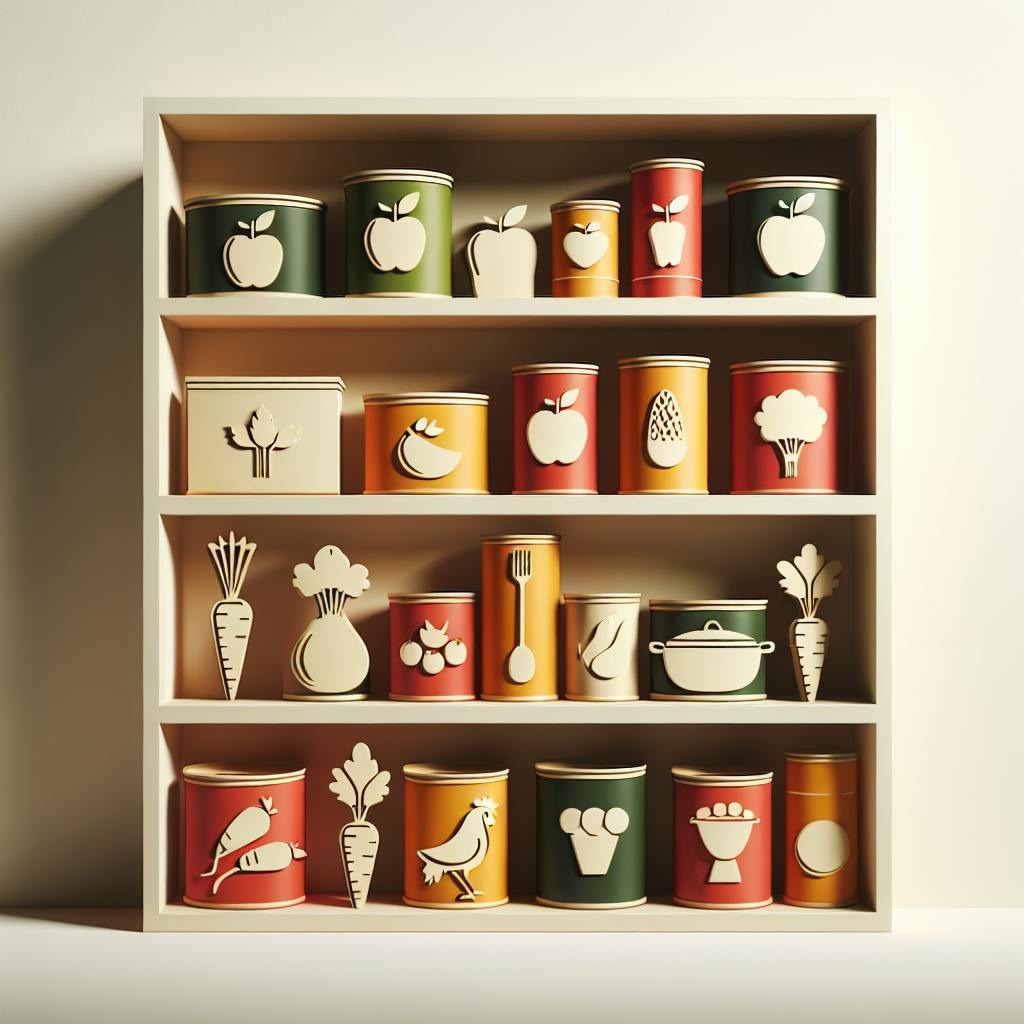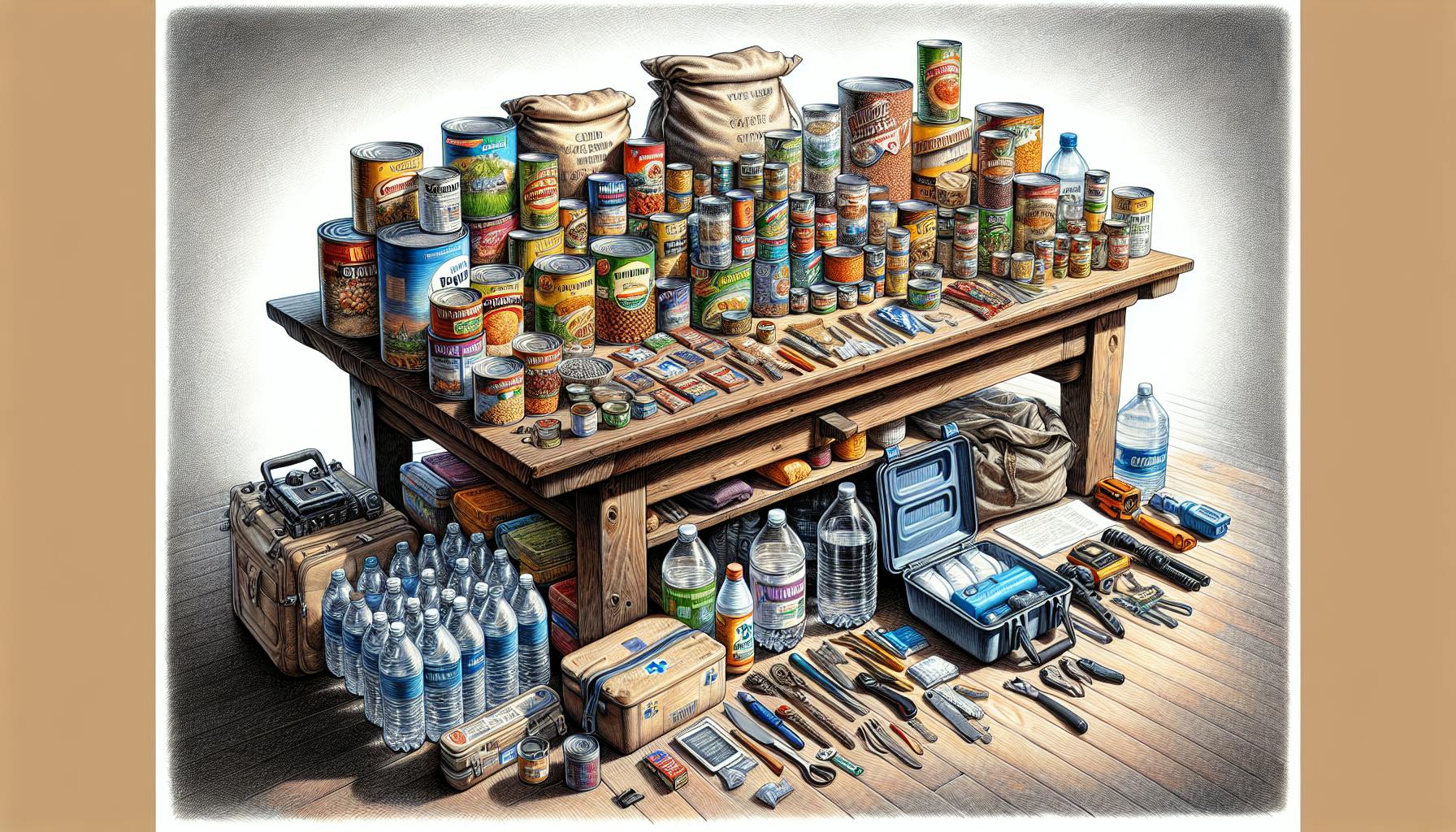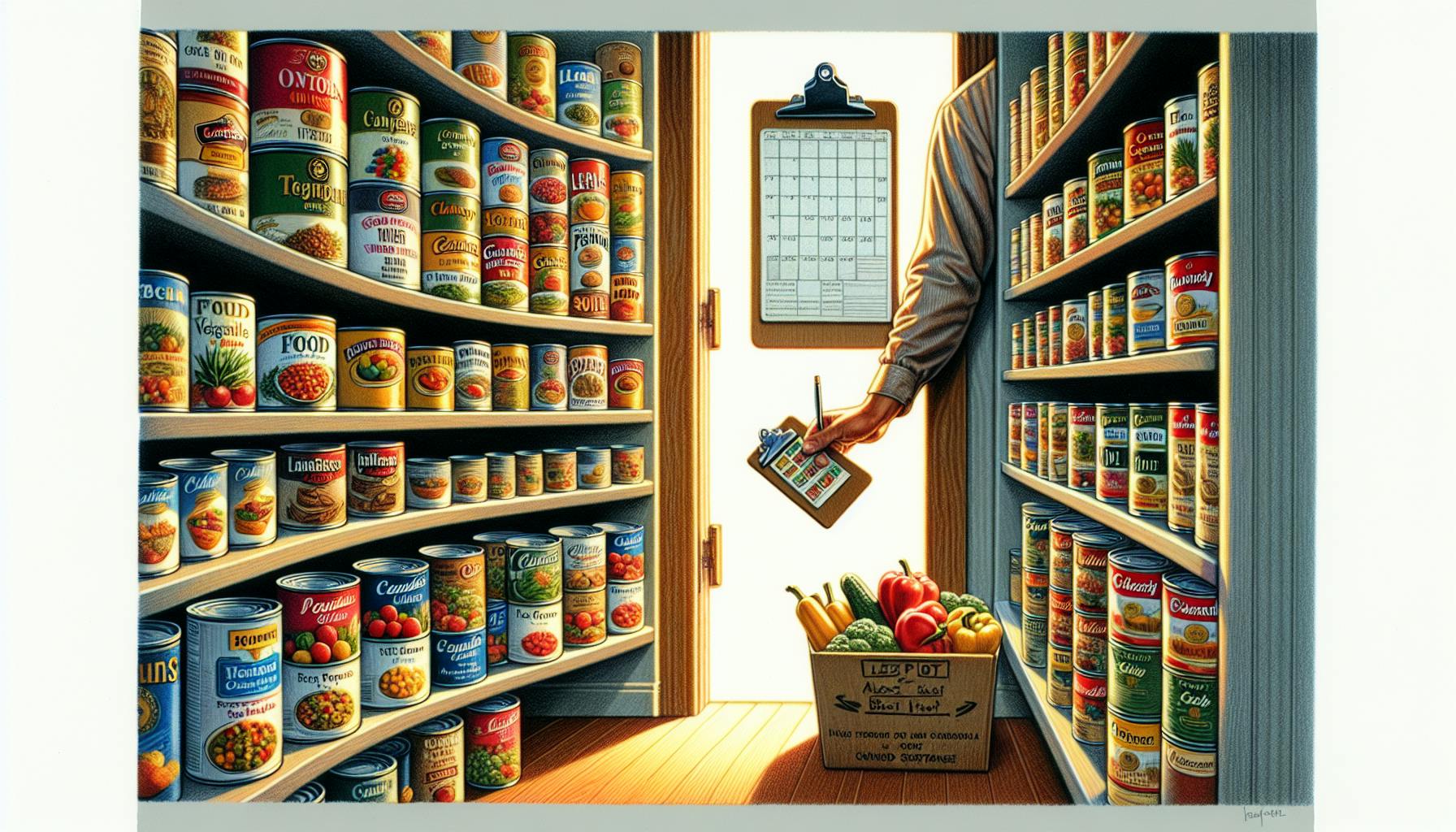Introduction
Being prepared with the right foods is an essential part of any emergency readiness kit. Having shelf-stable, nutrient-dense foods on hand can make all the difference in a crisis when access to fresh foods is limited or the power is out. The goal is to stock up on foods that will provide sustenance, energy, and key nutrients to keep you nourished and healthy when SHTF. The ideal survival gear foods or emergency rations should be high in calories, portable, nutritionally balanced, able to last for years in storage, and require minimal cooking resources. With careful planning and the right selection of canned goods, freeze dried meals, proteins, fruits, vegetables and snacks, you can assemble food supplies to handle short and long-term emergencies on any budget.
Stockpiling shelf-stable foods for emergencies ensures you always have emergency rations on hand when needed. Buying certain items in bulk also saves money over time. Having an established food storage eliminates worries and provides peace of mind knowing you can sustain yourself and your family when access to fresh food is cut off.
Calorie Sources
Canned foods like meats, beans, and fruits are essential sources of protein, carbs, vitamins and minerals that provide energy-giving calories and sustenance during an emergency. Canned chicken, tuna, chili, and fruit cocktail offer portable calories and nutrition. Dried fruits, nuts, seeds and jerky offer a lightweight, nutrient-dense calorie punch. Comfort foods like chocolate, peanut butter, crackers, granola bars are great for morale in stressful times. MREs and freeze-dried camping meals like Mountain House require minimal preparation and can safely be stored for years, making them ideal for survival stockpiles when cooking fuel may be limited. The key is to pack enough calories from diverse sources to prevent fatigue, maintain health, and avoid hunger pains.
Essential Nutrients
While carbs and calories are crucial for energy, a balanced mix of nutrients is vital for health during prolonged reliance on your food stores. Packing canned fish like tuna and salmon provides essential proteins and omega-3 fatty acids for brain and immune function, even if refrigeration is not available. Including canned fruits like pineapple and peaches packed in juice provides key nutrients like vitamin C to support immunity, especially important if fresh produce is scarce. Don't forget comfort foods like chocolate, sweets, coffee and teas that lift morale in tough times. Rounding out your stockpile with canned veggies, peanut butter, dried fruits and nuts covers all the nutritional bases to keep your body nourished and energized.
Drinks and Hydration
Keeping the body hydrated is just as critical as food intake, especially in emergency scenarios involving physical exertion and stress. Having gallons of water per person for at least 2 weeks is recommended not just for drinking, but also for food preparation and sanitation needs. Water purification tablets or filters like the Sawyer Mini provide backup options if water services are disrupted. Powdered electrolyte mixes like Gatorade help replenish nutrients lost through sweat, diarrhea, or vomiting. Adding shelf-stable milk, coffee, tea or juice provides hydration options and is comforting and morale-boosting. Don't underestimate the value of drinks - they prevent dangerous dehydration and keep energy and spirits up in tough times.
Cooking and Preparation
Most survival food requires minimal cooking, but having at least some basic food prep and heating capability provides access to hot, comforting meals that boost morale. A small rocket stove, propane camping stove and fuel allow heating canned soups and meals with minimal effort or electricity. A manual can opener, utensils, mess kits and paper plates enable quick meal prep and cleanup without relying on lots of water. Choosing freeze-dried, MRE and canned items that can be eaten cold if needed provides flexibility. The key is reducing reliance on resources like cooking fuel, electricity and water that could be disrupted in an emergency. Useful basic prep tools include a camp stove, paper plates, mess kits, and a manual can opener.
Special Dietary Needs
Tailoring food selections to accommodate allergies, intolerances, dental issues, and cultural preferences ensures your survival supplies nourish everyone relying on them. Those with gluten intolerance will need gluten-free oats, crackers and pasta. Dairy restrictions require skipping powdered milk in favor of shelf-stable nut milks. Those on keto diets need more proteins and fats like tuna, jerky and nuts over carbs. Soft or pureed foods like applesauce, canned peaches, and instant mashed potatoes suit those with dental issues. Labeling foods clearly assists those with vision impairments in safely selecting their own provisions. Providing comfort foods can coax picky eaters, kids and the elderly to eat. Taking the time to customize food supplies shows care and prevents needless suffering.
Key Food Types
Fruits and Vegetables
Canned produce like peaches, pears, applesauce, pineapple, mixed fruit, carrots, green beans and tomato sauce provide key nutrients. Dried fruits like raisins, apricots, apples and cranberries are calorie-dense and easily portable. Reconstituting freeze-dried produce is an option, and dehydrated veggie powder provides nutrition.
Grains and Starches
Rice, oats, pasta, crackers and cereal offer carbs for energy and familiar, comforting meals. MREs provide fully contained meals requiring just heating. Instant mashed potatoes are a morale-boosting comfort food. Quinoa, buckwheat, and gluten-free oats accommodate dietary restrictions.
Proteins and Legumes
Canned chicken, tuna, salmon and beans like black beans, kidney beans, and chickpeas provide essential proteins and nutrients. Nuts, seeds, nut butters, jerky and protein bars are calorie-dense. Canned chili and baked beans offer portable protein.
Dairy and Alternatives
Powdered milk, UHT milk boxes, nut milks, evaporated milk, butter packets and cheese powder provide protein and fat without refrigeration. Shelf-stable almond and coconut milks suit dairy-free diets.
Snacks and Morale Boosters
Hard candy, chocolate, coffee, tea, popcorn, pretzels, bouillon cubes provide comfort and energy. Spices, condiments and hot sauce improve flavor. Granola bars, protein bars, and dried fruit keep energy levels up.
Key Factors for Selection
Calories and Nutrients
Aim for at least 2000 calories per day with a mix of protein, fat, carbs, vitamins and minerals. Avoid empty calories and pack the most nutrient-dense options.
Shelf Life
Look for 1-5+ years of shelf life. Store in cool, dry place and rotate stock using FIFO system.
Ease of Preparation
Pack ready-to-eat items along with canned goods and meals requiring minimal cooking. Have manual, non-electric tools on hand like a can opener, camp stove, and mess kits.
Taste and Variety
Include comfort foods and variety for morale. Spices, condiments and sauces improve flavor.
Portability
Choose lightweight items around 300 calories per serving for mobility if bugging out. Resealable, durable packaging is ideal. Dried fruit, jerky, and nuts travel well.
Budgeting Considerations
Quantity and Volume
Buy larger, bulk sizes for economy and portion into grab-and-go bags. Calculate total calories needed for time period. Shop at warehouse stores like Costco for deals.
Building Over Time
Start small and gradually expand your supply budgeting monthly. Slowly build skills like dehydrating. Set savings goals to expand food reserves.
DIY Options
Dehydrate, can, pickle, or jar foods yourself. Make jerky, nut butter, bread and energy bars.
Creative Sourcing
Shop warehouse stores, bulk food outlets, direct from farms/CSAs. Use coupons and loyalty programs. Buy on sale and discount websites.
Value Comparison
Calculate cost per meal or calorie. Compare shelf life value. Factor in labor for DIY. Seek out bulk discounts.
Key Takeaways
- Have at least 2-4 weeks of survival food supplies for emergencies
- Prioritize nutritional density, calories, shelf life when selecting
- Include easy ready-to-eat and quick prep options
- Rotate stock before expiration and gradually build supply
- Take advantage of bulk pricing, sales, and budget over time
- Store foods properly and routinely rotate your stock to maximize shelf life
Having the right survival gear food supplies boosts readiness, morale, and health during emergencies when resources are scarce. With thoughtful selection and storage of nutrient-dense, shelf-stable foods you can be confident you'll have sustenance to thrive and stay energized when SHTF.


